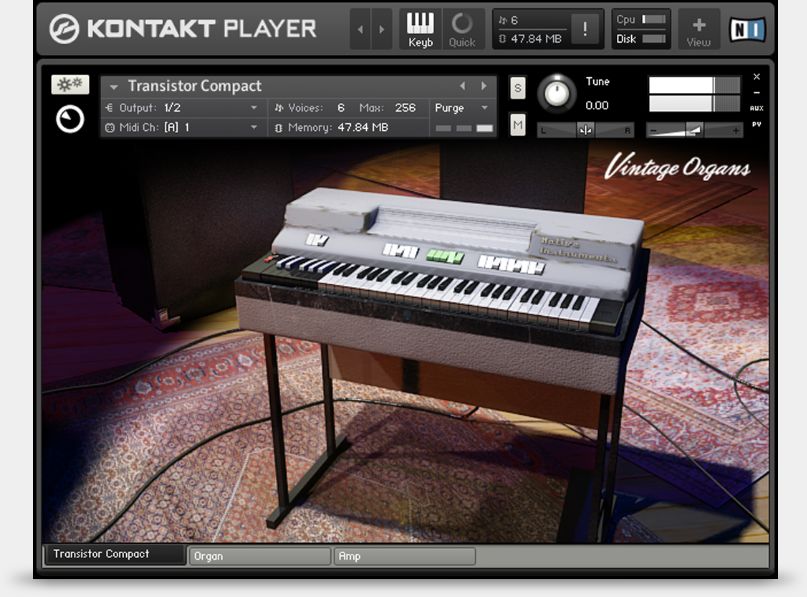

- NATIVE INSTRUMENTS VINTAGE ORGANS LOGIC MANUALS
- NATIVE INSTRUMENTS VINTAGE ORGANS LOGIC MANUAL
- NATIVE INSTRUMENTS VINTAGE ORGANS LOGIC PORTABLE
- NATIVE INSTRUMENTS VINTAGE ORGANS LOGIC PRO
- NATIVE INSTRUMENTS VINTAGE ORGANS LOGIC SOFTWARE

NATIVE INSTRUMENTS VINTAGE ORGANS LOGIC MANUAL
The keys on each manual have a lightweight action, which allows players to perform rapid passages more easily than on a piano. No difference in volume occurs regardless of how heavily or lightly the key is pressed (unlike with a piano), so overall volume is controlled by a pedal (also known as a "swell" or "expression" pedal). Each is laid out in a similar manner to a piano keyboard, except that pressing a key on a Hammond results in the sound continuously playing until it is released, whereas with a piano, the note's volume decays.
NATIVE INSTRUMENTS VINTAGE ORGANS LOGIC MANUALS
As with pipe organ keyboards, the two manuals are positioned on two levels close to each other. Most Hammond organs have two 61-note (five- octave) keyboards called manuals.


Unlike an American Guild of Organists pedalboard, a console Hammond normally has 25 pedals.
NATIVE INSTRUMENTS VINTAGE ORGANS LOGIC SOFTWARE
The sound of a tonewheel Hammond can be emulated using modern software such as Native Instruments B4.
NATIVE INSTRUMENTS VINTAGE ORGANS LOGIC PORTABLE
Companies such as Korg, Roland, and Clavia have achieved success in providing more lightweight and portable emulations of the original tonewheel organs. Hammond-Suzuki continues to manufacture a variety of organs for both professional players and churches. This culminated in the production of the "New B-3" in 2002, a recreation of the original B-3 organ using digital technology. The Hammond name was purchased by the Suzuki Musical Instrument Corporation, which proceeded to manufacture digital simulations of the most popular tonewheel organs. These organs were less popular, and the company went out of business in 1985. In the 1970s, the Hammond Organ Company abandoned tonewheels and switched to integrated circuits. Jimmy Smith's use of the Hammond B-3, with its additional harmonic percussion feature, inspired a generation of organ players, and its use became more widespread in the 1960s and 1970s in rhythm and blues, rock, reggae, and progressive rock. Jazz club owners found that organ trios were cheaper than hiring a big band. It quickly became popular with professional jazz musicians in organ trios, small groups centered on the Hammond organ. The organ was originally marketed by the Hammond Organ Company to churches as a lower-cost alternative to the wind-driven pipe organ, or instead of a piano. The organ is commonly used with the Leslie speaker.Īround two million Hammond organs have been manufactured. Until 1975, Hammond organs generated sound by creating an electric current from rotating a metal tonewheel near an electromagnetic pickup, and then strengthening the signal with an amplifier to drive a speaker cabinet. Multiple models have been produced, most of which use sliding drawbars to vary sounds. The Hammond organ is an electric organ invented by Laurens Hammond and John M. This thread has inspired me so much that I'm going to step away from the forum for a while and fall down the stairs into the studio and.Vibrato, chorus, reverb, harmonic percussionĢ × 61-note manuals, 25-note pedals (consoles)Ģ × 44-note manuals, 13-note pedals (spinets)Īmphenol connector to Hammond Tone Cabinet or Leslie speaker Mind you, the latest version of Logic managed to screw up a lot of my projects with things other than the EVB3 that there's a chance that things are screwed up to the point of working in this revision. If anything however, I've just had way too many issues with the EVB3 like hung notes in the middle of a song the won't clear when hitting the panic button. I've even mapped my keyboard's sliders to the drawbars so I can control them in real time and I have way more fun than legally allowed. Screen Shot at 12.48.37 PM.jpgI definitely agree that the Logic's EVB3 sounds amazing. It's super amazing on guitar, as well - and the choice of mics/positions etc. Also, the new Leslie cabinet (found in the "Modulation" menu as "Rotor Cabinet") is the bees knees. Native Instruments still rules for certain things, but the LPX is my first choice generally. and are sometimes faster in getting to "that" sound that I'm looking for. Now, the LPX versions sound better to my ears. I used to use the Native Instruments vintage organs for just about everything.
NATIVE INSTRUMENTS VINTAGE ORGANS LOGIC PRO
+1 for Logic Pro X's *new* Hammond B3 organ.


 0 kommentar(er)
0 kommentar(er)
